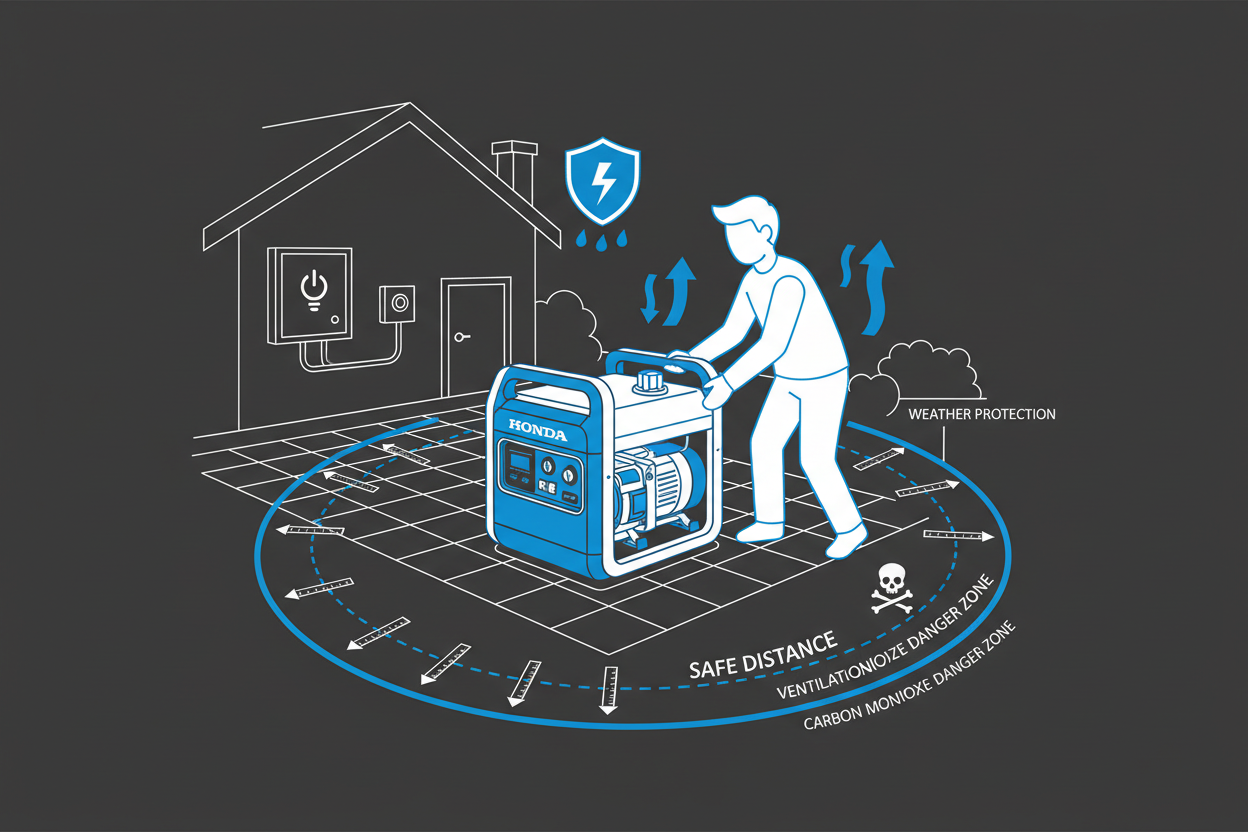Safe Placement and Operation Tips for Home Backup Generators
Proper generator placement ensures safe and reliable home backup power. Following recommended safety guidelines protects families from carbon monoxide and overheating risks.
Outdoor operation with correct clearance prevents fumes from entering living spaces during outages.

Safe Generator Placement
Generators must be placed outside in well-ventilated areas. Exhaust should always face away from windows, doors, and air intakes.
Homeowners should maintain at least twenty feet of clearance from occupied structures. Proper distance reduces carbon monoxide buildup and lowers noise exposure.
- Place on level outdoor ground
- Maintain twenty-foot distance from openings
- Aim exhaust away from the home
- Keep area free of obstructions
Weather and Surface Considerations
Generators require protection from heavy rain or snow. Weather covers and shelters can improve reliability when used correctly.
Units should sit on stable surfaces to prevent vibration and fuel spillage. Avoid placing generators on soft or uneven ground.
- Use open-sided shelters for rain protection
- Avoid enclosed tents or sealed structures
- Ensure stable footing for runtime safety
Fueling Safety
Refueling must be done only when the generator is fully cooled. Hot engines can ignite fuel vapors.
Proper fuel storage keeps gasoline and propane cylinders safe during extended outages. Ventilated outdoor storage reduces risk.
- Turn off before refueling
- Allow full cooling before opening fuel caps
- Store fuel outdoors in approved containers
Extension Cord and Load Safety
Heavy-duty cords prevent overheating and voltage drop. Cords should match amperage requirements and remain free of damage.
Managing loads prevents overload and protects electronics. Avoid connecting high-draw devices simultaneously.
- Use outdoor-rated heavy-duty cords
- Inspect cords for wear before use
- Limit total load to safe operating levels
Conclusion
Safe placement and operation improve reliability and protect homes during outages. Following distance, ventilation, and fueling guidelines ensures safer backup power.
